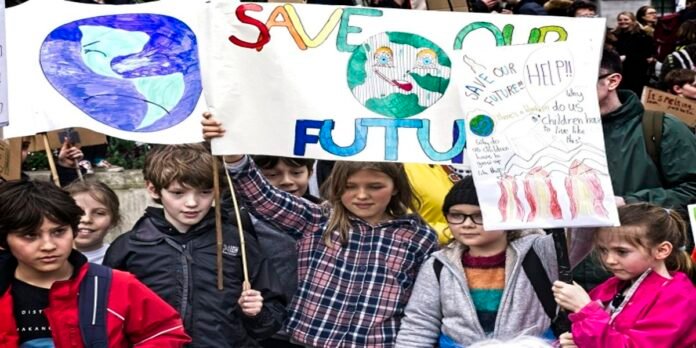A recent study detailing how and where environmental philanthropic grants are allocated shows a lack of “intellectual diversity on the climate issue,” according to leading political scientist, Roger Pielke, Jr.
The study, authored by Matthew Nisbet, Professor of Communication Studies and Affiliate Professor of Public Policy and Urban Affairs at Northeastern University, analyzed $556.7 million in “behind-the-scenes” grants distributed by 19 major environmental foundations from 2011-2015 in the immediate aftermath of the failure to pass cap-and-trade legislation in 2010.

https://onlinelibrary.wiley.com/doi/epdf/10.1002/wcc.524
Nisbet found that more than 80 percent of those funds were devoted to promoting renewable energy, communicating about and limiting climate change and opposing fossil fuels, while only two percent, or $10.5 million, was invested in technologies that would lower carbon emissions like carbon capture storage or nuclear energy. The donations themselves were also very concentrated; more than half of the money disbursed by the philanthropies was directed to 20 organizations in total.
Some of the more prominent recipients and grant totals cited by Nisbet include the Sierra Club receiving at least $48.9 million, National Resources Defense Council’s $14.1 million, and Environmental Defense Fund’s $13.4 million.
“One of the conclusions that I think is probably the most important from the Nisbet study is that there’s not a lot of support for intellectual diversity on the climate issue, which is a shame because what the world’s doing isn’t working,” Pielke, a professor at the University of Colorado Center for Science & Technology Policy Research, told Western Wire. “So you’d think that there’d be at least some resources going into looking at new approaches, alternatives, even if they’re contingency plans.”
But according to Nisbet’s research, that is not where the vast majority of environmental grants are being applied. Funding for non-profit journalism, communications plans, and political campaigns dwarfs that of developing new technologies for carbon abatement. And yet, despite more than $150 million being invested in messaging, polls show that the push has failed to register climate change as a top-tier policy concern for Americans.
In fact, a recent study found that millennials born between 1981 and 2000 are no more likely than previous generations to “do something” about climate change. According to Pielke, that shows a need to change the way foundations, activists and policy experts approach to the issue, which consistently ranks near the bottom of the top 20 issues surveyed.
In the years preceding the Nisbet study timeframe, major foundations like the Hewlett Foundation, Energy Foundation, and the Oak Foundation signed on to the “Design to Win” strategy that resulted in the collective pooling of resources rather than scattered, individualized disbursements. While Pielke says creating and pursing a shared climate agenda may make sense, “That also probably helped contribute to some of the monoculture that Nisbet documents in his latest work.”
“If we’re worried about the accumulating amount of CO2 in the atmosphere, then for all the politics, for all the noise, for all the heat, it is ultimately a technology problem,” said Pielke. “To stabilize the amount of CO2 in the atmosphere the global economy has to go from being about 15 percent powered by carbon-free sources today, to well over 90 percent by the end of the century. That’s a big ask. I’ve long argued that the only way that happens is not by making fossil fuel energy so expensive, we have to go to alternatives. It’s by making alternatives so cheap that we’ll prefer them instead of fossil energy.”
The key in doing so will be to shift the characterization of climate change from that of a political football to a question of innovation, according to Pielke.
“If we’re going to make progress, we’re going to need things we don’t have now. We’re going to need modular nuclear reactors, we’re going to need big batteries, we’re going to need the ability to capture carbon directly from the air at a reasonable price. And the only way we get those sorts of technologies is we set out to do it,” said Pielke. He noted that achieving the emissions targets delineated in the Paris Agreement is dependent on technologies that don’t yet exist.
One of the major reasons for the stagnation in climate progress can be attributed to the extreme polarization of the issue over the past few decades. Nisbet notes in his study that environmental causes began partnering with other grassroots organizations seeking “social justice-oriented solutions to climate change” and employed an “intersectional” strategy which connected the issue to other causes more aligned with the liberal ideology in order to build a larger movement. Nisbet says this strategy “likely contributed to deepening political polarization, serving as potent symbols for Republican donors and activists to rally around.”
In an absence of legislative action and failure to cultivate broad, bipartisan support for long term solutions, policy has been relegated to executive action, which can be reversed once another administration enters the White House.
“The problem is, that the climate issue has for 20 years been owned, taken over, by some of the most far-left activists, who have the leading voices on the issue,” Pielke said. Pielke noted that he voted twice for President Barack Obama and supports action to combat climate change. “The politics inside of the climate movement such as it is, tend to favor progressively getting more extreme… if Ted Nordhaus and Michael Shellenberger and me—aren’t considered acceptable company in the climate movement – they’re never going to get to [Republican Senator from Oklahoma Jim] Inhofe.”
Nordhaus and Shellenberger founded the environmental think tank, The Breakthrough Institute, in 2003. Breakthrough identifies its organization as “progressive” and describes its mission as, “dedicated to bringing new ideas to the table that change the debates over energy, the environment, and the economy so they better reflect the global challenges of the 21st century.”
Instead, climate change has been adopted by both parties as a wedge issue and used for short term political gain.
“The agonizing over the Keystone pipeline illustrates how symbolic an issue it had become,” Pielke said.
Nisbet’s study found that nearly $70 million of the total grants distributed in the five-year timespan were focused on opposing fossil fuel production and development. Specifically in Colorado, The Hewlett Foundation gave $1.3 million to the Colorado Conservation Fund in grants categorized by Nisbet as “support[ing] efforts to ban/restrict fracking.”
Nisbet estimates that fallout from the 2016 election would lead to “[f]inancial support for efforts restricting fossil fuel development and for turning public opinion against the industry” expanding, with examples including “municipal lawsuits filed against fossil fuel companies to recover climate change impacts.”
That effort has recently expanded from coastal cities in California and New York City to Colorado.
The Hewlett Foundation has also approached the opposition to fossil fuels from the legal perspective, donating $300,000 to the non-profit Niskanen Center to support the group’s “climate policy and litigation program.” Niskanen is providing pro-bono legal support to the City and County of Boulder and San Miguel County in their recently filed lawsuit seeking damages against Suncor and ExxonMobil related to climate change.
However, the lawsuits lack political support, even from sympathetic parties. When asked about the litigation’s merits, none of the four Democratic gubernatorial candidates in Colorado endorsed the lawsuit during a recent debate.
The lack of support was telling for Pielke.
“If you can’t get Jared Polis to endorse your climate campaign, there’s not something wrong with Jared Polis, you may want to take a step back and look at your approach to advocacy and its political viability,” Pielke said.
Ultimately, according to Pielke, there is an argument to be made on both sides of the spectrum that acting on climate change will be beneficial in the long term. Market forces can be powerful, as witnessed with the rapid adoption of shale gas once it was established as a cheaper, cleaner fuel source.
“Even for people who don’t care about climate, and don’t care about energy, if you ask well—how are we going to get rich? … One answer is, well we could figure out how to not just help, but get paid to expand the energy infrastructure of the planet. And it’s better that we get paid rather than our competitors, most notably China—so I think there is a pressing economic rationale to develop the technologies of the future faster than anyone else does,” said Pielke.
Though the ultimate solution to climate change is a complicated one, Pielke says a shift from the “all-or-nothing” approach to the climate conversation is necessary to achieving that end.
“Until the community embraces the idea that we don’t know everything about how to solve this issue, politically, technologically, policy-wise, then there is really not a lot of motivation for engaging in that difficult process of building bridges, searching for policies that might work,” Pielke said.

